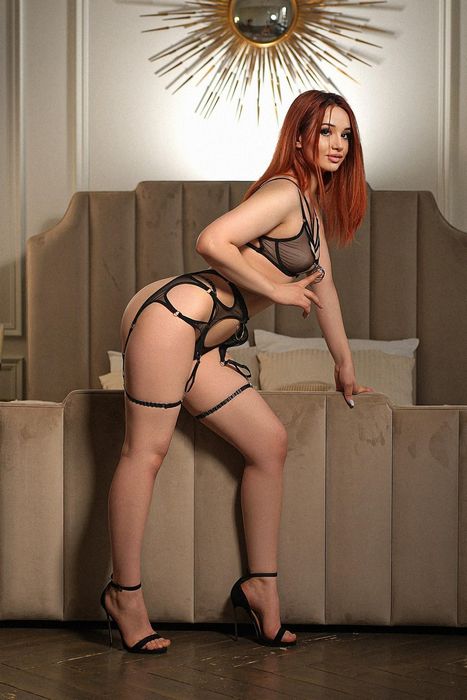Visual elements such as color and patterns play a crucial role in shaping human perception and emotional responses. From the way we interpret brands to how we make purchasing decisions, understanding these influences allows marketers and designers to craft more compelling messages. Modern examples, like Sweet Rush Bonanza review 2024, demonstrate how effective use of visual cues can capture attention and foster loyalty.
Table of Contents
- Fundamental Principles of Color and Pattern Psychology
- The Influence of Color on Perception and Behavior
- Patterns as a Tool for Engagement and Information Processing
- The Intersection of Color, Patterns, and Cultural Contexts
- Applying Color and Pattern Strategies in Modern Marketing
- Depth Perspective: Cognitive Theories and Practical Implications
- Non-Obvious Insights: Hidden Influences of Color and Pattern on Decision-Making
- Future Trends in Digital and Physical Environments
- Conclusion
Fundamental Principles of Color and Pattern Psychology
Human perception of color and patterns is rooted in complex visual processing mechanisms. The retina’s photoreceptors—rods and cones—detect different wavelengths, translating light into signals interpreted by the brain. This biological foundation explains why certain colors evoke specific emotional responses.
Peripheral vision plays a vital role in detecting motion and attention-grabbing stimuli. For example, yellow, positioned at the end of the visible spectrum, is highly effective in attracting peripheral attention due to its brightness and high luminance contrast. Studies show that yellow can trigger a quick response, often used in warning signs and advertisements to direct focus efficiently.
Patterns, whether geometric or organic, influence how we process information. Repetitive patterns can create a sense of rhythm and familiarity, aiding in recognition and memory retention. This connection between visual perception and emotional response underlines why certain colors and patterns are favored in branding and marketing.
The Influence of Color on Perception and Behavior
Colors carry psychological meanings that influence our feelings and actions. Red, for instance, is associated with excitement, urgency, and passion, often used in clearance sales. Yellow signifies optimism and attention, making it ideal for highlighting important information. Blue evokes calmness, trust, and professionalism, frequently seen in corporate branding.
The contrast between colors and their brightness levels further enhances their effectiveness. High contrast combinations, such as black and yellow, are highly visible and can instantly capture attention, which is why they are common in safety signage and promotional materials.
Patterns as a Tool for Engagement and Information Processing
Patterns influence perception by directing focus and facilitating cognitive processing. Geometric patterns, such as grids or chevrons, evoke order and stability, often used in corporate logos. Organic, irregular patterns tend to generate feelings of naturalness and spontaneity, appealing to a sense of authenticity.
Repetitive patterns enhance brand recognition and build trust over time. For example, the distinctive checkered pattern of a well-known brand can become a subconscious cue for quality. Patterns are also instrumental in guiding viewers’ focus toward key elements, aiding memory retention and quick decision-making.
The Intersection of Color, Patterns, and Cultural Contexts
Color perception is deeply influenced by cultural backgrounds. For example, while red often symbolizes luck and prosperity in China, it may represent danger or warning in Western contexts. Similarly, patterns carry different connotations—floral designs may be seen as feminine in one culture and traditional in another.
Understanding these cultural nuances is essential for global marketing. A product featuring specific colors or patterns must resonate appropriately across diverse markets to avoid misinterpretation and to foster positive associations.
Applying Color and Pattern Strategies in Modern Marketing
Modern marketing leverages insights into color and pattern psychology to craft compelling visual identities. For instance, Sweet Rush Bonanza employs vibrant yellow highlights to draw attention to specific features, enhancing user engagement without overwhelming the overall design.
Patterns in branding—such as stripes, dots, or waves—are used strategically to create memorable impressions. These elements foster brand recognition and emotional connection, making consumers more likely to recall and trust the product or service.
Depth Perspective: Cognitive Theories and Practical Implications
The six degrees of separation theory suggests that small visual cues can create broad social and cognitive connections. In visual design, this translates to how minor color or pattern choices can influence extensive perceptions and associations. For example, a subtle yellow accent can evoke feelings of optimism that ripple through brand perception.
Practical design choices rooted in perception science—such as selecting high-contrast color schemes or familiar patterns—can significantly improve user experience. When viewers can quickly process visual information, engagement naturally increases, leading to better communication outcomes.
“Understanding how small visual cues influence broad perceptions allows designers to craft experiences that are both emotionally resonant and cognitively effective.”
Non-Obvious Insights: Hidden Influences of Color and Pattern on Decision-Making
Color and pattern subconsciously affect impulse buying behaviors. For instance, peripheral vision detection of yellow or red can trigger quick decisions, often before conscious awareness. Retail environments frequently utilize these colors to subtly influence shopper behavior.
Familiar patterns, such as repetitive geometric elements, create a sense of comfort and trust. This psychological comfort can significantly impact brand loyalty, especially when combined with culturally resonant colors. Subtle visual cues—like slight variations in pattern size—can also deliver complex information more effectively without overwhelming the viewer.
Future Trends in Digital and Physical Environments
Emerging technologies such as augmented reality (AR) and virtual reality (VR) are transforming visual perception, enabling adaptive and highly personalized experiences. For example, virtual try-ons in e-commerce leverage real-time color and pattern adjustments to enhance customer engagement.
Data-driven customization allows brands to tailor visual cues based on user preferences, increasing relevance and emotional impact. Products like Sweet Rush Bonanza exemplify how innovative design inspired by perceptual science can stand out in a crowded marketplace, especially when combined with interactive digital elements.
Conclusion
Harnessing the power of color and patterns is central to effective visual communication. These elements influence perception, evoke emotions, and guide decision-making in subtle yet profound ways. For designers and marketers, understanding the scientific principles behind visual perception enables the creation of engaging, memorable experiences.
By applying practical strategies—such as leveraging color contrast, cultural awareness, and pattern familiarity—businesses can enhance user engagement and build lasting connections with their audience. Ongoing advancements in digital technology promise even more sophisticated opportunities to optimize visual cues, making perceptual science an essential tool in modern branding and marketing efforts.




